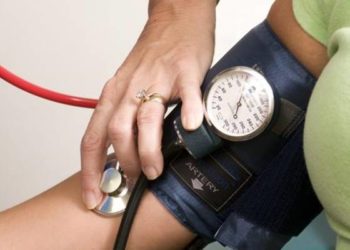Appropriate use criteria for angiography may frequently miss obstructive coronary artery disease
1. In this study of appropriate use criteria for invasive coronary angiography in stable ischemic heart disease, a slight majority of patients with “appropriate” indications for catheterizations had obstructive coronary artery disease.
2. A substantial proportion of patients with “uncertain” or “inappropriate” indications for angiography also had obstructive coronary artery disease.
Evidence Rating Level: 2 (Good)
Study Rundown: Angiography, a procedure used to image the blood vessels supplying the heart, is frequently used to diagnose patients with obstructed coronary arteries. Responding to the non-standardized use of angiography, several professional organizations, led by the American College of Cardiology Foundation, investigated the criteria used to guide the use of this procedure to diagnose stable but potentially dangerous coronary artery obstruction. The criteria distinguish between “appropriate”, “uncertain” and “inappropriate” indications for diagnostic angiography based on patients’ pre-procedure symptoms and characteristics. This study set out to validate these classifications by comparing appropriateness of angiography to actual findings from this procedure. Overall, a slight majority of patients with “appropriate” indications for angiography were found to have obstructed coronary arteries. However, approximately a third of patients with “uncertain” and “inappropriate” indications for angiography who nevertheless underwent angiography were also found to have obstructed coronary arteries. Notably, this study did not include data from patients who did not undergo angiography, meaning that the results only partially reflect how these criteria would be applied. Nevertheless, these results suggest that the appropriateness criteria often do not track with actual results from angiography, raising concerns about the utility of these criteria in patients with suspected coronary artery blockages.
Click to read the study, published today in The Annals of Internal Medicine
In-Depth [retrospective cohort]: This study reported on results from 48,336 patients who underwent diagnostic angiography for suspected stable ischemic heart disease in Ontario between 2008 and 2011. Appropriateness criteria were retrospectively applied to these patients, and were then compared to findings of obstructive coronary artery disease or need for revascularization procedures within 90 days of initial angiography. Obstructive CAD was found in 52.9% of patients with “appropriate” indications for angiography, but also in 36.7% of patients with “uncertain” indications and 30.9% of patients with “inappropriate” indications (p<0.001). Revascularization was performed in 40.0% of patients with “appropriate” indications for initial angiography, as well as in 25.9% of patients with “uncertain” initial indications and 18.9% of patients with “inappropriate” initial indications (p<0.001). However, more patients with “appropriate” indications underwent revascularization than those without (p<0.001).
Image: CC/Wiki/Pantaleo et al.
©2015 2 Minute Medicine, Inc. All rights reserved. No works may be reproduced without expressed written consent from 2 Minute Medicine, Inc. Inquire about licensing here. No article should be construed as medical advice and is not intended as such by the authors or by 2 Minute Medicine, Inc.





![Weekly dalbavancin noninferior to daily therapy for acute skin infection [DISCOVER 1 and 2 Trials]](https://www.2minutemedicine.com/wp-content/uploads/2014/06/MRSA-aureus-75x75.jpg)

